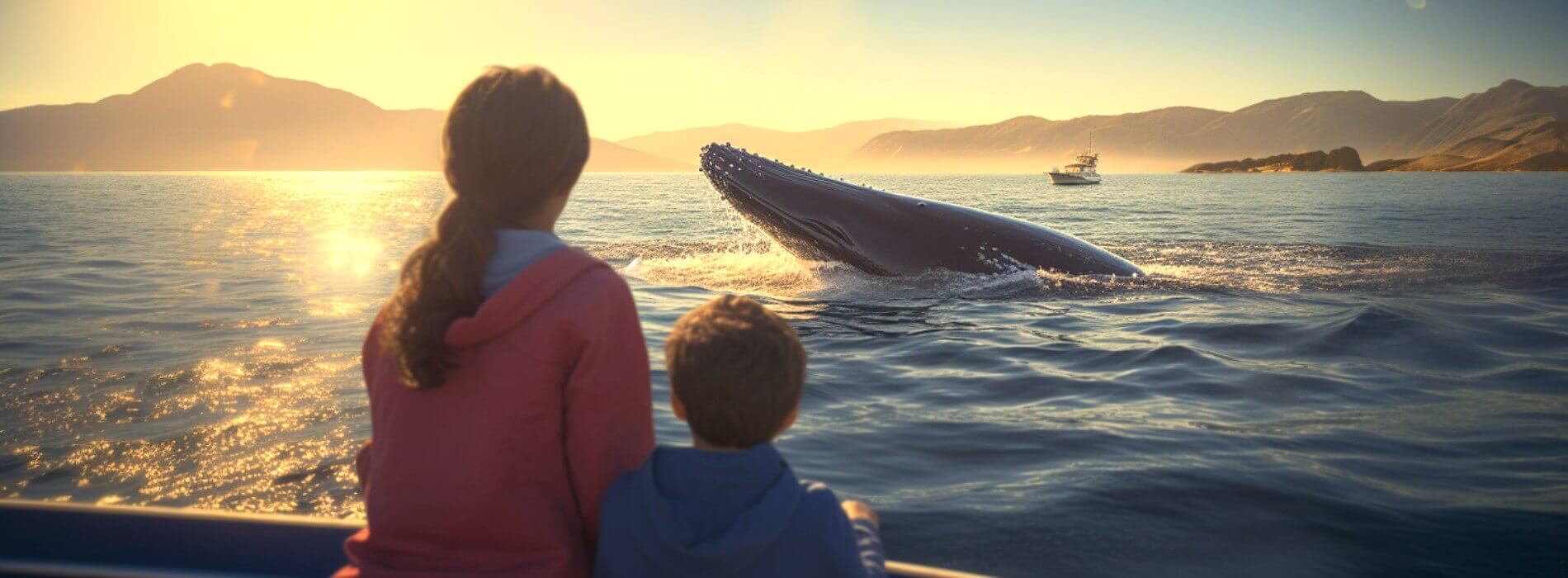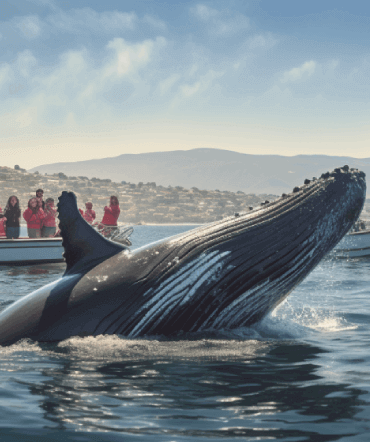
LOS CABOS December 17, 2024
When planning a whale watching adventure in Los Cabos, timing is everything. The season start during December, The peak of the whale watching season is typically between January and March. During this time, the chances of spotting whales are exceptionally high. Visitors can see humpback whales, known for jumping out of the water, and majestic grey whales that travel from the Arctic.
Remember, while these months offer the highest probability of sightings, whale activity can vary. Check with local tour operators for the latest info and best times to go out to sea.
Types of Whale Watching Tours Available in Los Cabos
Standard Group Tours: These are the most common and affordable options. Conducted in larger boats, they offer a shared experience, often with knowledgeable guides who provide insightful commentary about the whales and their habitat.
Private Tours: For those seeking a more personalized experience, private tours offer exclusivity and flexibility. These tours are ideal for families or groups wanting a more intimate encounter with nature.
Luxury Tours: These high-end tours combine whale watching with luxury. Think gourmet meals, fine wines, and unparalleled comfort as you cruise the waters. They're perfect for those looking to blend adventure with relaxation.
Each tour type offers a unique way to experience whale watching, with varying durations ranging from a few hours to a full day. It is important to consider what you want out of the experience when selecting your tour.
Considerations
Self-Care Measures
On a whale watching tour in Los Cabos, prioritizing your comfort and safety enhances the experience. Here's what to keep in mind:
Dress Appropriately: Weather at sea can be unpredictable. Wear layers to adjust to changing temperatures and a waterproof jacket to stay dry. Comfortable, non-slip footwear is a must.
Sun Protection: The sun can be intense, even on cloudy days. Use an eco-friendly broad-spectrum sunscreen, wear a hat, and consider UV-protective sunglasses.
Motion Sickness: If you're prone to seasickness, prepare in advance. Over-the-counter medication or natural remedies like ginger can help. Staying on deck and focusing on the horizon can also reduce discomfort.
Environmental Care
Respecting marine life and their habitat is crucial. Responsible whale watching not only ensures the safety of the whales but also preserves their natural behavior:
Noise Reduction: Loud noises can disturb whales. Keep conversations at a normal volume and avoid loud exclamations, especially during close encounters.
Littering: Dispose of all waste properly. Never throw anything overboard, as even insignificant items can harm marine life.
Following Guidelines: Always adhere to the guidelines set by the tour operator. These rules protect both the whales and the spectators.

What to Bring?
For a comfortable and memorable tour, pack the following essentials:
- Binoculars for a closer view
- Camera or smartphone for photos
- A light backpack or bag for personal items
- Seasickness remedies, if needed
What to Avoid?
To ensure a positive experience for all, avoid:
- Feeding or attempting to touch the whales
- Flash photography, as it can disturb the animals
- Loud or behavior
- Bringing large or bulky items that could obstruct views
Make the most out of your whale watching in Cabo:
Choose the Right Tour Operator: Research and select a reputable tour operator who prioritizes safety and environmental conservation.
Best Times for Sightings: Morning tours often provide calmer sea conditions. Ask your tour operator for advice on the best time based on recent whale activity.
Be Patient and Observant: Whale watching can sometimes be a waiting game. Stay patient and keep your eyes peeled for signs like water spouts, tail flukes, or breaches.
Use Binoculars: While the whales can come close, binoculars will enhance your viewing experience, especially for sightings further away.
Capture the Moment, Respectfully: While it’s exciting to capture photos or videos, remember to respect the whales’ space. Avoid flash photography and focus on enjoying the moment too.
Frequently Asked Questions About Whale Watching in Los Cabos
Is Whale Watching in Los Cabos Safe?
A: Yes, whale watching in Los Cabos is safe when you choose a reputable tour operator. These operators adhere to safety regulations and guidelines to ensure a secure experience for both the guests and the whales.
Can Children take part in Whale Watching Tours?
Absolutely! Whale watching is a family-friendly activity. However, it's important to check with the tour operator about any age restrictions or safety guidelines for children.
How Close Can We Get to the Whales?
Regulations are in place to protect whales, typically requiring boats to maintain a certain distance. The exact distance can vary, but the aim is always to observe without disturbing the whales.
Are Whale Sightings Guaranteed?
While sightings are highly likely during the peak season, they can't be guaranteed as whales are wild animals in their natural habitat. Most operators have a high success rate and some offer return vouchers if no whales are spotted.
What Species of Whales Can Be Seen in Los Cabos?
The most commonly seen species include humpback whales and gray whales. Occasionally, visitors might also spot blue whales, orcas, and other marine life.
Do I Need Special Equipment for Whale Watching?
Basic equipment like binoculars and cameras are recommended, but not mandatory. Dressing in layers and bringing sun protection are also advised.
Where can I stay to make the most of this tour?
R: You can stay at Royal Solaris Los Cabos or GR Solaris Lighthouse Los Cabos, as most whale-watching tours include transportation to Cabo San Lucas, so you don't have to worry about anything.PREVIOUS POST NEXT POST